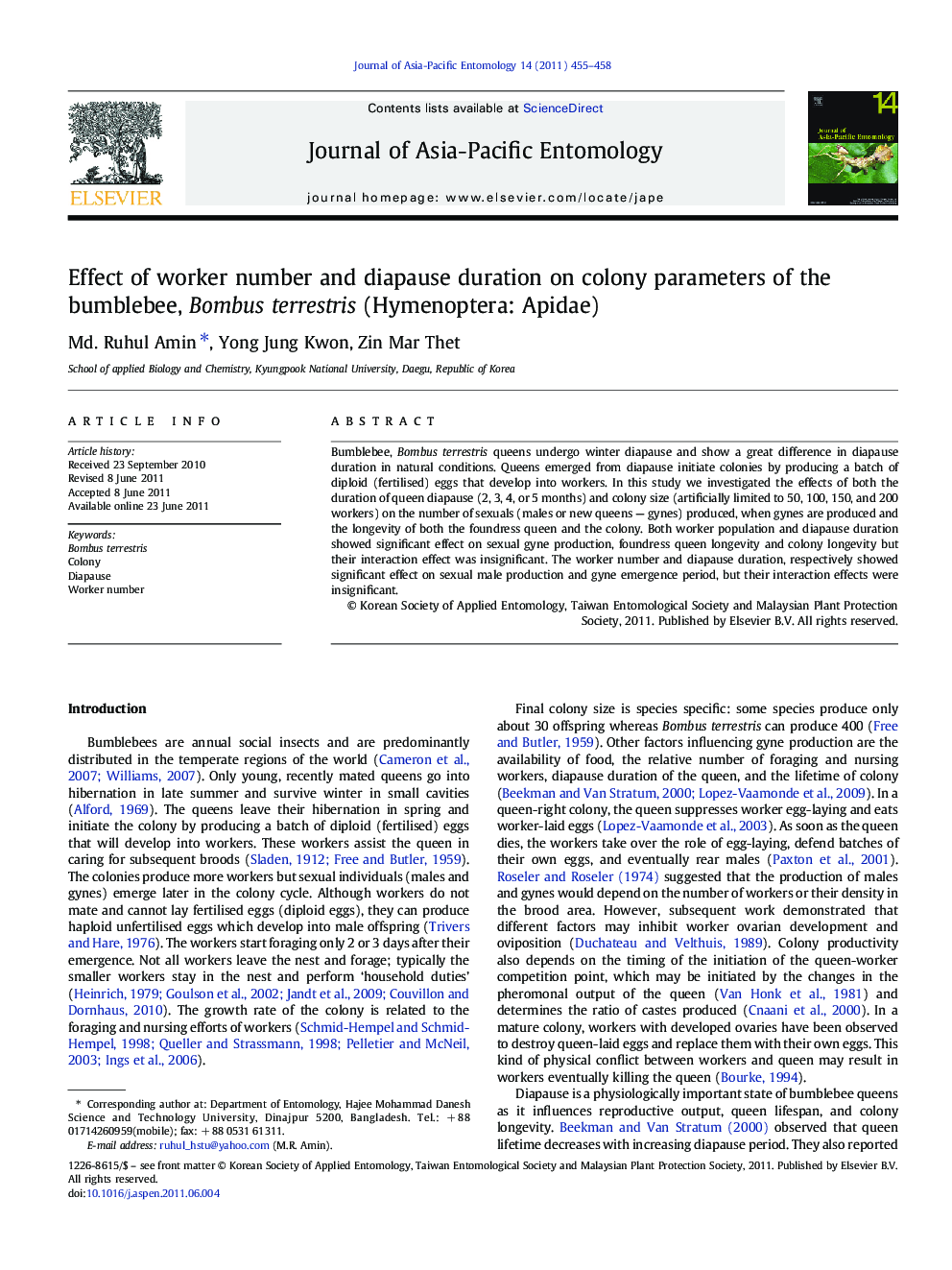| Article ID | Journal | Published Year | Pages | File Type |
|---|---|---|---|---|
| 4524567 | Journal of Asia-Pacific Entomology | 2011 | 4 Pages |
Bumblebee, Bombus terrestris queens undergo winter diapause and show a great difference in diapause duration in natural conditions. Queens emerged from diapause initiate colonies by producing a batch of diploid (fertilised) eggs that develop into workers. In this study we investigated the effects of both the duration of queen diapause (2, 3, 4, or 5 months) and colony size (artificially limited to 50, 100, 150, and 200 workers) on the number of sexuals (males or new queens — gynes) produced, when gynes are produced and the longevity of both the foundress queen and the colony. Both worker population and diapause duration showed significant effect on sexual gyne production, foundress queen longevity and colony longevity but their interaction effect was insignificant. The worker number and diapause duration, respectively showed significant effect on sexual male production and gyne emergence period, but their interaction effects were insignificant.
Graphical abstractNumber of gynes (mean ± SD) produced in relation to worker number and diapause duration. Bars within a group followed by same letter(s) are not significantly different (DMRT, p ≤ 0.05).Figure optionsDownload full-size imageDownload as PowerPoint slideHighlights► We studied queen diapause and worker population effects on bumblebee sexual production. ► We found significant effect on gyne production, queen longevity and colony longevity. ► Sexual male production and gyne emergence period were found significant difference. ► But the interaction effects of the factors were insignificant.
